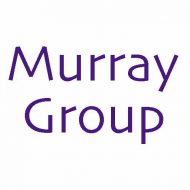Deep Ultraviolet and Infrared Laser Ablation of Carbonic Anhydrase II
Neda Feizi1; Kadeem O Hayes2; Blessing Chisom Egbejiogu2; Kelcey B. Hines2; Kermit K. Murray2; Touradj Solouki1
1Baylor University, Waco, TX; 2Louisiana State University, Baton Rouge, LA
Introduction
Integrating ion mobility-mass spectrometry (IM-MS) with laser ablation (LA) holds great appeal for acquiring spatially resolved details on protein conformations. Previously, we showed that protein conformation remained intact after LA. However, the potential for laser-induced unfolded proteins to refold back into native-like structures in the capture-solvent remains unresolved. In contrast to typical proteins, denatured bovine carbonic anhydrase II (CA) does not revert to its original conformation in native capture-solvent; instead, it aggregates. This characteristic makes CA particularly well-suited for investigating conformational changes in native surface mass spectrometry (NSMS). Here, we employ NSMS to explore protein unfolding and refolding events, enabling us to examine conformational stabilities during infrared (IR) and deep UV (DUV) laser ablation experiments.
Methods
All solvents and chemicals were purchased from commercial sources and used without further purification. CA stock solution was prepared at 750 µM concentration in native solution of 200 mM ammonium acetate (NH4OAc) adjusted to a pH of 7.3 ± 0.1. Four microliters of the stock solution was deposited on the quartz microscope slide and air-dried. Either a 193 nm ArF excimer laser or 2.94 µm OPO laser was used at a repetition rate of 20 Hz to ablate CA from the surface. All laser ablation experiments were performed in transmission geometry with capturing in 20 µL of native solution. Native IM-MS and broadband collision-induced unfolding (CIU) data were acquired using a Waters Synapt G2-S instrument (Milford, MA).
Preliminary Data
Native mass spectrometry was utilized to probe the charge states and CIU pathways of CA. After deposition and drying on a glass microscopic slide, CA was either washed with native solution or ablated with IR or DUV lasers into the native solution. To minimize variations in mass spectra, including observed charge states and peak shapes, all ESI emitters were inspected with SEM before acquiring mass spectra and only emitters with tip diameters between 600 ± 100 nm were utilized. Mass spectra from triplicate washed and laser-ablated CA showed analogous patterns and charge state distributions (+8 to +10). Moreover, the statistical t-test indicated that the average charge states and peak areas of the washed and laser-ablated CA were not significantly different. The broadband protein ion unfolding experiments were performed without quadrupole ion isolation of specific charge states. Ion collisional activation was achieved in the pre-IM trap cell by establishing a potential difference from 10 to 100 V in 5 V increments. CIU plots showed that the number of unfolding intermediates and the onset voltages for each unfolding transition of washed and laser-ablated CA were similar. The findings from complementary MALDI and bottom-up analyses of native, refolded, and aggregated CA corroborate these observations. The presented work suggests that the native-like conformation of CA remains unchanged after DUV and IR laser ablation; therefore, laser ablation can be used for NSMS.
Novel Aspect
Carbonic anhydrase II serves as a unique probe, enabling the investigation of structural stability during IR and DUV laser ablation.

